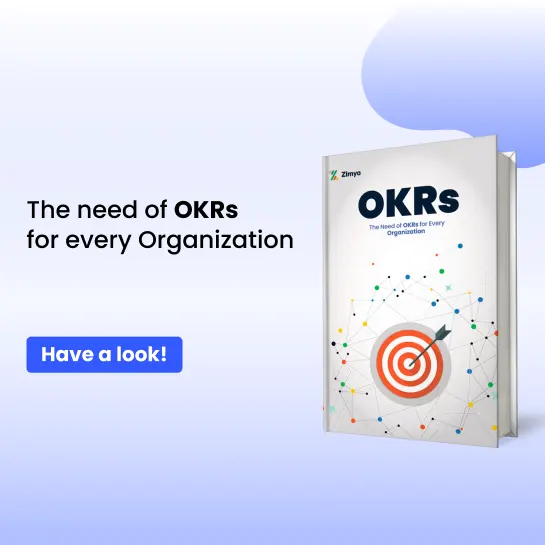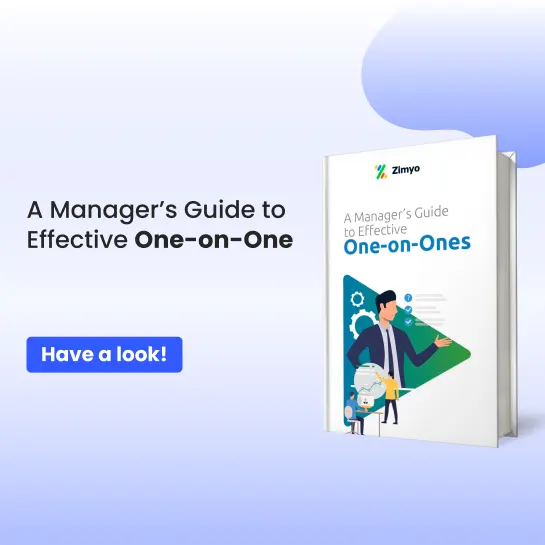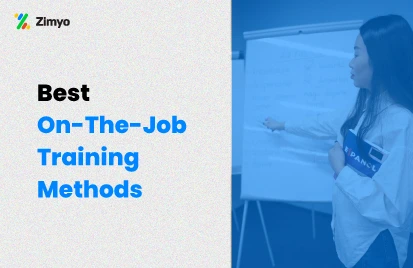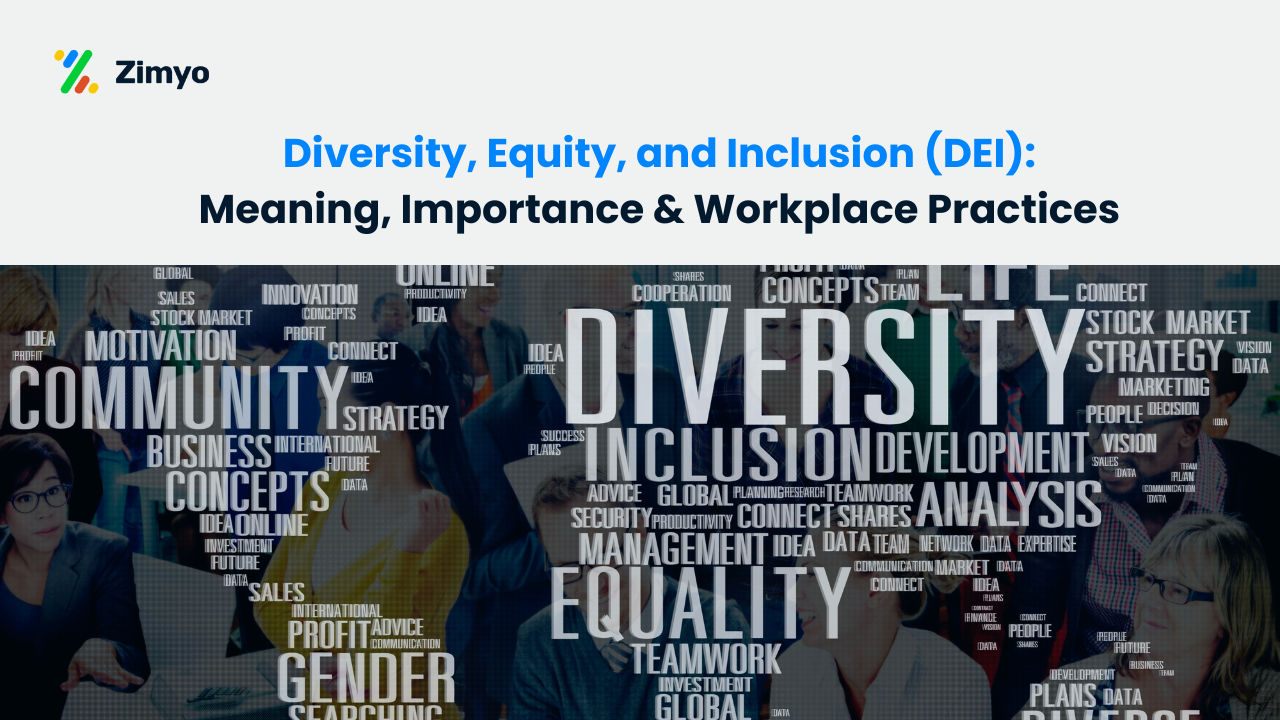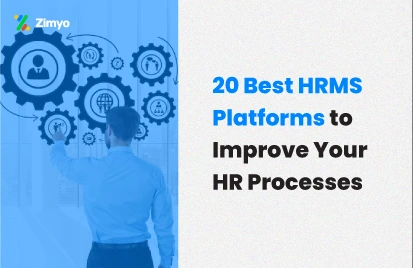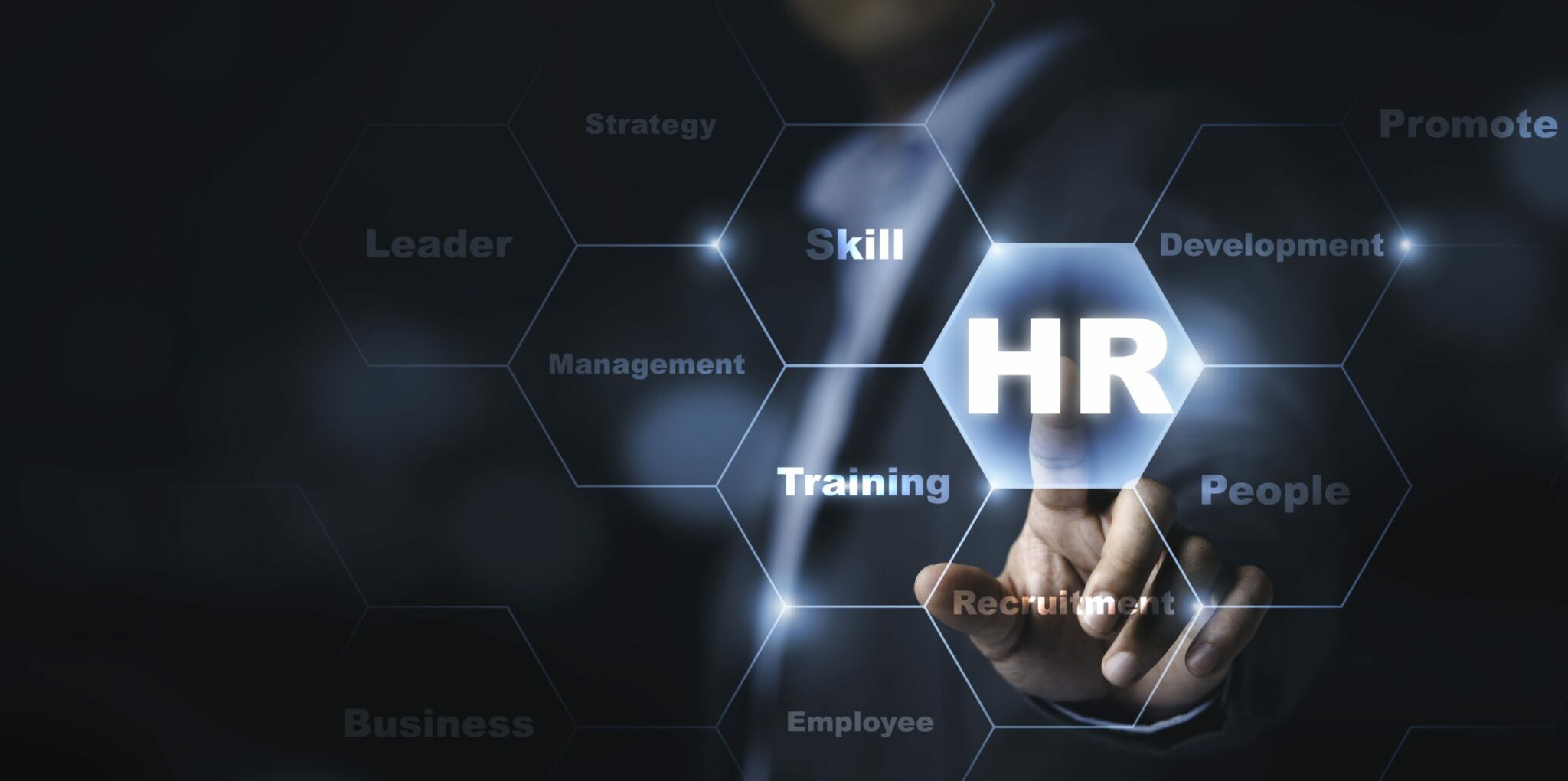In today’s world, where everything from AI to automation is reshaping how businesses function, one thing remains unshaken, the importance of people. That’s why HR Best Practices are more than just fancy term in a company handbook; they are the backbone of sustainable growth. Whether you’re a startup with 20 employees or a large enterprise with over 5,000, you simply can’t ignore the practices of HR that fuel your success.
The right human resources best practices don’t just support employees, they inspire them, empower them, and align them with your organizational goals. If you’re not prioritizing this by 2025, you might just be left behind.
This blog is your one-stop guide to understanding the best practices for human resource management and how they directly influence your business trajectory. So, buckle up and get ready to dive into the new age of HR excellence in detail.
But first, let’s get a quick glance of the 16 best HR practices adopted worldwide.
Quick Glance: 16 HR Best Practices Every Organization Should Adopt in 2025
S No. | HR Best Practice | Brief Explanation | Thought-Provoking Twist |
1 | Strategic Workforce Planning | Forecast future talent needs using business data and attrition trends instead of hiring reactively. | Use AI-based predictive analytics to anticipate which roles will need succession planning next quarter. |
2 | Structured Recruitment & Selection | Standardize hiring with defined criteria, assessments, and cultural-fit checks. | Replace résumé screening with skill-based blind hiring to remove unconscious bias. |
3 | Robust Onboarding Programs | Go beyond paperwork—introduce culture, goals, and early feedback loops. | Create a 30-60-90 day roadmap for every new hire to reduce early attrition by 25%. |
4 | Continuous Learning & Development | Encourage employees to keep learning through micro-courses, certifications, and mentorship. | Introduce “Learning Hours” each week where teams share insights from external courses. |
5 | Transparent Performance Management | Shift from annual reviews to real-time feedback and goal tracking. | Use 360° feedback tools to identify hidden top performers beyond manager visibility. |
6 | Employee Engagement Strategies | Improve engagement through surveys, recognition, and wellness initiatives. | Host monthly “Voice Forums” where employees pitch improvement ideas directly to leadership. |
7 | Competitive Compensation & Benefits | Offer fair, personalized, and market-benchmarked pay and perks. | Add “choose-your-benefit” portals letting employees customize perks like extra leave, insurance, or training. |
8 | Diversity, Equity & Inclusion (DEI) | Foster an inclusive culture through fair hiring and equitable policies. | Set measurable DEI goals (e.g., 40% diverse leadership) and track progress transparently. |
9 | Compliance & Risk Management | Keep HR policies updated with laws, taxes, and safety standards. | Automate compliance alerts and maintain digital audit trails to avoid last-minute legal rushes. |
10 | Succession Planning | Identify and groom internal talent for future leadership roles. | Create shadow programs where high-potential employees co-lead projects with senior leaders. |
11 | Flexible Work Policies | Offer hybrid or remote models to improve work-life balance. | Introduce “Flex Fridays” or core-hour models to maintain collaboration while allowing freedom. |
12 | Strong Employer Branding | Showcase culture, values, and employee stories to attract top talent. | Let employees take over social media channels to give an authentic view of company life. |
13 | Employee Wellness Programs | Support mental, physical, and financial well-being. | Incorporate “wellness leave” days for mental health breaks without needing medical proof. |
14 | Tech-Driven HR Automation | Automate routine HR tasks to boost efficiency and accuracy. | Use chatbots for instant employee queries about payslips, leave balance, or company policy. |
15 | Internal Communication Framework | Encourage transparent, two-way communication through town halls and updates. | Launch an internal podcast hosted by leaders to discuss company updates and milestones. |
16 | Analytics & Data-Driven Decisions | Use HR metrics like retention, engagement, and absenteeism for strategy. | Combine HR analytics with sentiment analysis from feedback to predict burnout trends early. |
Now, let us throw light on each one of these in detail and also understand what HR best practices are, why do they matter and how do they impact business growth as a whole.
What is HR Best Practices and Why do they matter now more than ever?
HR Best Practices are tried-and-tested strategies that help HR professionals align operations, improve employee engagement, boost productivity, and ensure legal compliance. These practices are not one-size-fits-all, but rather flexible models that align your HR operations with business goals. They create a blueprint for high performance and long-term success.
When we say human resources best practices, we mean everything from how you onboard your new hires to how you reward, retain, and develop talent. These practices of HR cover both the technical side (like payroll and compliance) and the human side (like culture and wellness). In 2025, they matter more than ever due to rising competition, remote work environments, evolving employee expectations, and a strong push toward DEI (Diversity, Equity, and Inclusion).
How Do HR Best Practices Impact Business Growth?
Implementing HR Best Practices isn’t just about ticking boxes. According to McKinsey, companies that implement structured HR practices see a 15-25% improvement in organizational performance compared to those that don’t. This includes better employee engagement, reduced turnover, and stronger alignment between HR and overall business strategy.
When you adopt best practices for human resource management, you automatically build a work environment where people feel valued, safe, and challenged to grow. It reduces risk, enhances compliance, and nurtures a culture of accountability. Think of them as invisible drivers working behind the scenes to create a high-performing, low-friction workplace.
16 HR Best Practices You Must Implement in 2025 (Explained in Detail)
Let’s break down each of these practices in detail. Every one of them can single–handedly change how your organization performs, and when combined, they’re unstoppable.
1. Strategic Workforce Planning
A strong workforce planning strategy helps you predict future talent needs and ensure you’re never caught off guard. It combines business intelligence with HR forecasting. You don’t just hire reactively, you plan ahead based on market demand, project pipeline, and attrition rates.
In 2025, with trends like quiet quitting and job hopping becoming the norm, strategic planning is no longer optional. You need data-driven tools and real-time insights to stay agile.
2. Structured Recruitment and Selection
The practices of HR in hiring have evolved beyond resumes. Today, structured recruitment involves AI-based screening, skill assessments, cultural fit evaluation, and candidate experience tools.
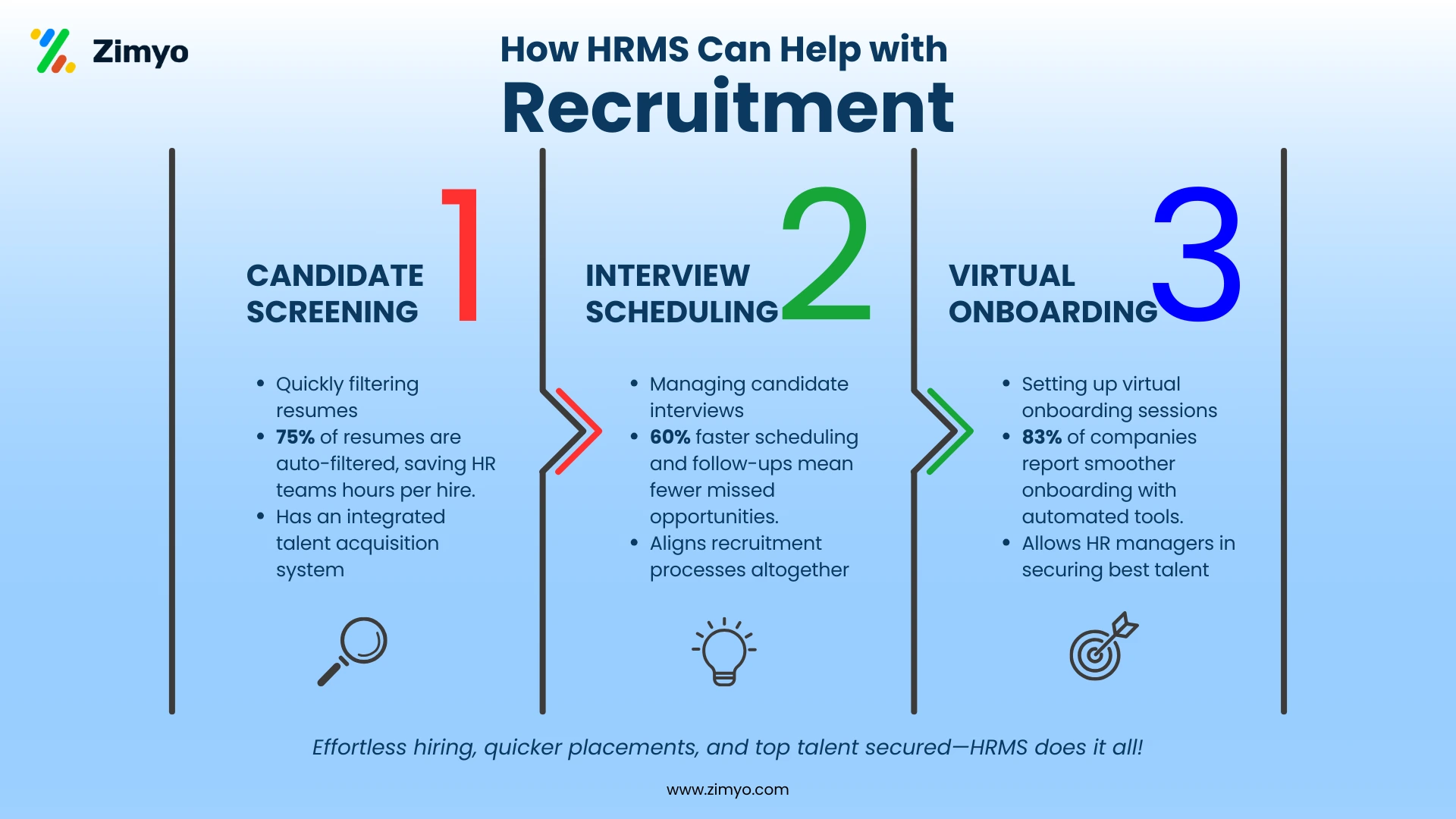
Companies that follow human resources best practices make data-backed hiring decisions, not gut-based ones. It’s about quality over quantity. The goal? Build a workforce that not only delivers but also stays.
3. Robust Onboarding Programs
According to Glassdoor, organizations with a strong onboarding process improve new hire retention by 82%. That’s a number you can’t ignore.
The best HR best practices around onboarding create a memorable first impression. It’s not just about paperwork, it’s about culture immersion, goal setting, team introductions, and early feedback loops.
4. Continuous Learning and Development (L&D)
In the world of AI and fast-changing tech, if your employees aren’t learning, they’re lagging. The best companies create a culture of continuous development.
Offer microlearning modules, access to certifications, webinars, and internal knowledge-sharing sessions. The key is to make learning a daily habit, not a yearly event.
5. Transparent Performance Management
Performance reviews in 2025 are real-time, not annual. They’re collaborative, data-driven, and continuous. The best practices of HR focus on goal tracking, feedback loops, and performance analytics.
Transparent performance management ensures employees know what’s expected and where they stand. This creates trust and a growth mindset.
According to Zimyo, organisations that adopt structured HR practices can see a 15-25% improvement in organisational performance compared to those that don’t.
6. Employee Engagement Strategies
According to Gallup, only 23% of employees are actively engaged at work. That’s a crisis. But also, an opportunity.
The top HR best practices to boost engagement include pulse surveys, recognition programs, 1:1 check-ins, and mental wellness initiatives. Happy teams don’t just stay longer, they perform better.
7. Competitive Compensation and Benefits
If you’re not benchmarking your salaries, you’re already losing talent. Offering competitive pay isn’t just good ethics, it’s smart business.
The best human resources best practices ensure pay equity, transparency, and personalization. Think bonuses, stock options, wellness benefits, and custom perks.
8. Diversity, Equity, and Inclusion (DEI)
In 2025, DEI isn’t a checkbox; it’s a necessity. Diverse teams perform better, innovate faster, and represent your customers more effectively.
The best practices for human resource management around DEI include inclusive hiring, sensitivity training, transparent policies, and data-backed audits.
9. Compliance and Risk Management
HR isn’t just about people; it’s about policies. You need airtight compliance with labor laws, tax rules, and industry-specific regulations.
Strong compliance practices prevent lawsuits, audits, and employee grievances. Invest in automated compliance tracking tools and keep policies updated.
10. Succession Planning
Future-proofing your company means grooming tomorrow’s leaders today. Succession planning ensures that key roles are never vacant.
Create leadership pipelines, mentorship programs, and career pathing structures. It boosts morale and shows that you believe in internal growth.
Studies show that only 23% of employees are actively engaged at work, highlighting the opportunity for HR software to improve employee engagement via tools like surveys and recognition programmes.
11. Flexible Work Policies
Remote, hybrid, four-day work weeks, flexibility is the new normal. The most employee-friendly HR best practices allow people to work when, where, and how they’re most productive.
It reduces burnout, enhances work-life balance, and improves retention. Tools like Slack, Asana, and Zoom make it possible at scale.
12. Strong Employer Branding
Candidates today Google you before you ever see their resume. A strong employer brand builds trust and attracts top-tier talent.
Use social media, employee testimonials, review sites, and career pages to showcase your culture, not just your vacancies.
13. Employee Wellness Programs
Physical, mental, and financial wellness, all matter. Companies that care for their people outperform those that don’t.
Introduce initiatives like counseling, meditation apps, fitness reimbursements, and stress management workshops.
14. Tech-Driven HR Automation
Manual HR is history. Invest in platforms that automate payroll, attendance, performance, and onboarding.
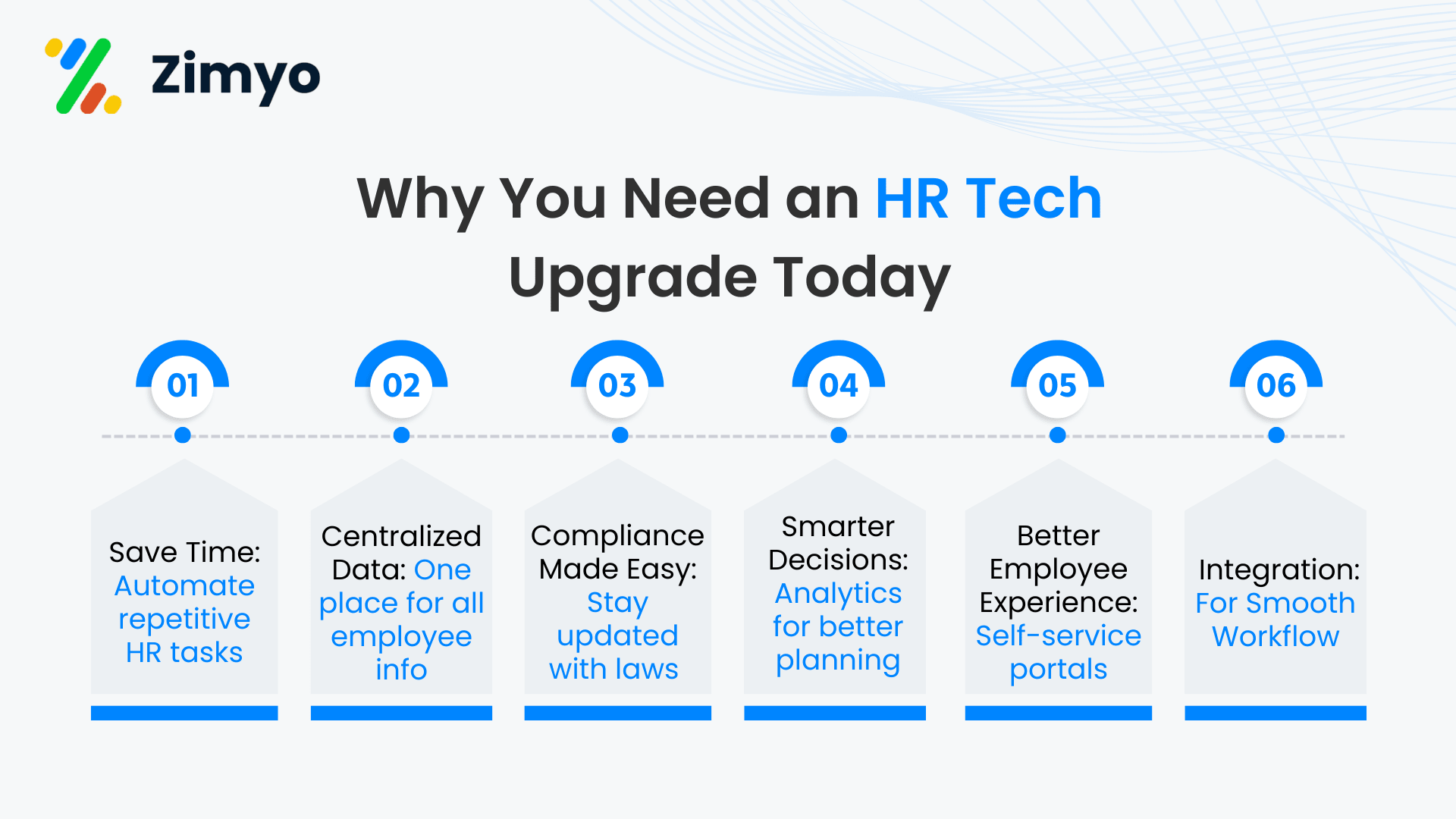
This not only reduces errors but frees up your HR team to focus on strategic goals. Tools like Zimyo, BambooHR, and Workday are great examples.
15. Internal Communication Framework
Clear, consistent communication builds culture. Use newsletters, Zimyo Engage channels, town halls, and surveys to create a two-way dialogue.
Employees who feel heard are more engaged and less likely to leave.
16. Analytics and Data-Driven Decisions
You can’t improve what you don’t measure. Track KPIs like retention, engagement, absenteeism, and recruitment metrics.
Let data drive every HR decision. Tools like Zimyo People Analytics make this easier than ever.
A Reality Check: Do Human Resources Best Practices Always Work?
Here’s the thing, even the best HR Best Practices won’t work if your culture doesn’t support them. You can automate feedback, but if leaders don’t act on it, nothing changes.
Also, don’t copy-paste what Google or Microsoft does. Customize your best practices for human resource management to fit your business size, values, and industry. The goal is progress, not perfection.
How Can You Actually Implement These HR Best Practices? (8 Quick Tips)

Models That Show HR Best Practices in Action
1. Harvard Framework of HRM
Developed by: Michael Beer and his colleagues at Harvard University in the 1980s.
Overview:
The Harvard Framework is one of the foundational models of human resources best practices. It emphasizes a strategic, human-centric approach to HRM. Rather than viewing HR as just administrative, it encourages organizations to integrate stakeholder interests, business strategy, and long-term outcomes.
Components:
This model is based on five main components:
- Stakeholder Interests – Includes shareholders, management, employees, government, and community. The model suggests that HR policies should align with the expectations of these stakeholders.
- Situational Factors – Factors like workforce characteristics, business strategy, labor market, and laws that affect HR choices.
- HRM Policy Choices – The strategic decisions organizations make in areas like recruitment, appraisal, rewards, and employee relations.
- HR Outcomes – Desired results such as commitment, competence, cost-effectiveness, and congruence.
- Long-term Consequences – Impacts on individual well-being, organizational effectiveness, and societal development.
Why it's Important?
- It promotes employee-centricity and long-term thinking.
- Encourages alignment between HR practices and business strategy.
- Highlights the importance of external environmental factors in HR planning.
Best For:
Organizations that want to balance strategic goals with human values and consider multiple stakeholder expectations.
2. Ulrich HR Model
Developed by: Dave Ulrich, a renowned HR thought leader.
Overview:
The Ulrich Model is one of the most practical and widely adopted models in modern HR management. It focuses on structuring the HR function itself to deliver maximum value to the business. Ulrich introduced four key roles that HR must play to be effective.
Key Roles in the Ulrich Model:
- Strategic Partner – Aligning HR strategies with business objectives.
- Change Agent – Supporting transformation and managing change.
- Administrative Expert – Streamlining HR operations and improving efficiency.
- Employee Champion – Listening to and advocating for employee needs and development.
Extended Structure:
Ulrich further refined the model to define three key HR structures:
- Shared Services: Handles routine administrative work (e.g., payroll, benefits).
- Centers of Excellence (COEs): Groups of specialists in areas like talent management, learning & development, compensation.
- HR Business Partners: Embedded within business units to provide strategic HR support.
Why it's Important?
- Helps transform HR from a support function to a strategic driver.
- Introduces efficiency through shared services and expertise through COEs.
- Encourages HR professionals to engage with business strategy, not just operations.
Best For:
Mid-to-large enterprises with complex structures seeking to professionalize and scale their HR functions.
3. High-Performance Work System (HPWS)
Developed by: Based on research and practices from various scholars including Jeffrey Pfeffer and Edward E. Lawler.
Overview:
HPWS is not a single model by one person, but a comprehensive approach to designing an employee-driven, performance-oriented work environment. It believes that by investing in people, organizations can gain a sustainable competitive advantage.
Core Elements of HPWS:
- Selective Hiring – Hiring people with the right skills and cultural fit.
- Extensive Training & Development – Building capabilities continuously.
- Performance-Based Compensation – Aligning rewards with contribution.
- Employee Involvement – Encouraging decision-making at all levels.
- Job Security – Creating a sense of stability and trust.
- Open Communication – Transparent sharing of goals and performance.
Why it's Important?
- Focuses on maximizing employee engagement, productivity, and innovation.
- Encourages a culture of continuous improvement and accountability.
- Research shows HPWS significantly improves organizational performance, customer satisfaction, and employee retention.
Best For:
Large enterprises aiming to create a culture of high performance and retain top talent in competitive markets.
Each of these models represents a different facet of HR best practices:
- The Harvard Framework emphasizes strategic alignment and stakeholder balance.
- The Ulrich Model focuses on organizational HR structure and role clarity.
- The HPWS model puts employee capability and empowerment at the core of business success.
Together, they provide powerful insights for building robust, future-ready HR strategies that support organizational growth.
What’s Next? Choose an HR Partner That Actually Helps You Do All This
None of these HR Best Practices mean anything without the right tools. That’s why it’s critical to find an HR tech partner that aligns with your goals. Platforms like Zimyo offer end-to-end HRMS systems,from payroll and performance to employee engagement and compliance.
Zimyo helps you not only implement but also improve your best practices for human resource management, making your business more agile, compliant, and employee-friendly.
Conclusion
In 2025, HR is not just about hiring or firing. It’s about crafting cultures, building experiences, and driving impact. The HR Best Practices we discussed today aren’t just nice-to-haves; they’re growth multipliers.
Whether you’re just starting or scaling globally, these human resources best practices can guide your way. The practices of HR are evolving, are you?
Frequently Asked Questions (FAQs)
What is the best practice in HR?
The best practice in HR is creating a people-first culture that aligns business goals with employee growth, using a consistent set of HR Best Practices. This includes transparent communication, fair compensation, continuous learning opportunities, and regular performance feedback. Among all best practices for human resource management, fostering trust and engagement stands out as the most impactful. Modern companies that adopt strategic human resources best practices, like talent retention programs, data-driven hiring, and flexible work policies, see higher productivity and stronger company culture. Implementing these practices of HR not only boosts performance but also builds a loyal, motivated workforce.
Which skill is best for HR?
The best skill for HR is emotional intelligence combined with strategic thinking. These are the foundation of many successful HR Best Practices. Emotional intelligence helps HR professionals handle conflicts, support employee well-being, and create a positive work environment, which are vital best practices for human resource management. Alongside it, strategic thinking enables them to align talent with business goals through modern human resources best practices like workforce planning, succession strategies, and performance analytics. Together, these skills shape effective practices of HR that drive both employee satisfaction and business outcomes.
How to be successful in HR?
To be successful in HR, you must embrace continuous learning, stay updated with labor laws, and apply proven HR Best Practices across your work. Success in HR today is no longer just about administrative tasks, it’s about adopting the best practices for human resource management, like data-backed decision-making, empathetic leadership, and employee engagement strategies. Professionals who follow such human resources best practices, whether in onboarding, diversity hiring, or digital HR transformation, tend to become trusted business partners. Ultimately, success comes from consistently implementing practices of HR that put people and purpose at the center of business.
What is onboarding in HR?
Onboarding in HR is the structured process of welcoming new employees and integrating them into the company using effective HR Best Practices. It goes beyond paperwork and induction, it’s about building a great first impression through orientation, mentorship, role clarity, and early engagement. Strong onboarding programs are considered one of the best practices for human resource management because they directly impact employee retention, productivity, and satisfaction. Many companies now follow human resources best practices by personalizing onboarding experiences, leveraging technology, and setting 30-60-90 day goals. As one of the core practices of HR, onboarding sets the tone for a positive, long-term employee journey.
What are the qualities of a good HR?
A good HR professional embodies empathy, fairness, resilience, and strong communication, all of which align with modern HR Best Practices. They must also have business acumen and a deep understanding of the best practices for human resource management, such as building inclusive cultures, managing change, and supporting employee development. When an HR leader consistently applies human resources best practices, they’re able to balance company policies with people’s needs, becoming both a guardian of culture and a driver of performance. These qualities are essential in effectively executing the practices of HR that support organizational growth.
What is the easiest HR role?
Among all the HR roles, the easiest one, relatively speaking, could be HR assistant or HR coordinator roles, especially for beginners, as they involve routine tasks that support senior HR professionals. However, even these roles require an understanding of HR Best Practices, especially in areas like documentation, employee communication, and scheduling. While they don’t demand deep strategic involvement, they still follow essential best practices for human resource management and help execute day-to-day practices of HR. Mastering these entry-level tasks while learning human resources best practices sets the stage for growing into more impactful roles over time.

